Mark Sisson's Blog, page 269
March 1, 2015
Weekend Link Love – Edition 337
 The LA Times profiled some guy named “Mark Sisson” and something called “Primal living”.
The LA Times profiled some guy named “Mark Sisson” and something called “Primal living”.
Research of the Week
The more tofu they eat, the worse community-dwelling elderly Chinese perform on tests of cognitive function.
In addition to killing gut bacteria, antibiotics also have the potential to destroy intestinal cells and damage mitochondria.
Among Finnish men, frequent sauna usage (4-7 times per week) is associated with greater longevity than infrequent sauna usage (once per week).
Exercise makes junk food less appealing.
Oh, look. Non-celiac gluten sensitivity is real, after all.
Mindfulness meditation improves sleep quality in older adults with sleep problems.
New Primal Blueprint Podcasts
Episode 56: Andrew Steele of DNAFit: Host Brad Kearns talks with Andrew Steele, British Olympic 400 m runner and Athletics Specialist for DNAFit. Loaded with PhD biochemists, molecular geneticists, and nutrigenomists, DNAFit is helping pro athletes, weekend warriors, regular folks, and even me optimize our diet and training.
Each week, select Mark’s Daily Apple blog posts are prepared as Primal Blueprint Podcasts. Need to catch up on reading, but don’t have the time? Prefer to listen to articles while on the go? Check out the new blog post podcasts below, and subscribe to the Primal Blueprint Podcast here so you never miss an episode.
Liver, Lobster, and Locusts: How Bizarre Foods Win Acceptance
Is Your Workout Worth the Risk?
Can Getting Your DNA Tested Help You Optimize Your Diet and Training?
6 Foreign Health Concepts from Around the Globe
Interesting Blog Posts
A summary of Tim Noakes’ recent talk at the Cape Town LCHF convention.
Disrupting animals’ circadian rhythms makes them more likely to be preyed upon in the wild. Could the same happen to humans?
Media, Schmedia
Fridge contents around the world.
Sugar sales are down in the UK.
Cholesterol (and coffee) is back on the menu.
Everything Else
Technology is great and all, but we’re really missing out on some serious stargazing as a result.
Luckily, an increasing number of “dark sky advocates” are speaking out.
Your dog knows when you’re lying.
Are you the parent of a “free-range kid” who has no one to play with? Find a free-range friend by registering here.
Bans on tiny plastic beads in soaps, scrubs, cosmetics, and even toothpaste are spreading nationwide. Good.
There’s a small Russian village where every able-bodied inhabitant is an accomplished tight-rope walker.
When you look closely, tree bark is really quite breathtaking.
Recipe Corner
Shredded beef ragu: serve it up with some zucchini noodles, over some spinach, or in a big bowl all by itself.
If it’s anything like her slow cooker kalua pig, you guys need to make NomNomPaleo’s pressure cooker kalua pig.
Time Capsule
One year ago (Mar 2 – Mar 8)
Movement, Exercise, and Training: Getting the Results You Want – The difference between the three and what it means for your fitness.
How to Say “No” to Yourself – A roadmap for making better decisions — and avoiding bad ones.
Email of the Week
Dear Mark,
The exact moment that I fell for my now wife was during Primal Blueprint inspired sprints on Ocean Beach in San Francisco. As a recent convert she had read about the unique benefits of sprinting on the Mark’s Daily Apple website.
Prior to sprinting on Ocean Beach we ate brunch at San Francisco’s famous Cliff House. She was wearing a stylish Sunday brunch dress; I was probably wearing something equally semi-formal. The original plan was to walk along the beach and enjoy the family-friendly weather, which is saying a lot because San Francisco beaches are not the fun-in-the-sun type deals that I envision with Malibu beaches. The beach was packed. On our walk we were dodging dogs, kids, waves, and frisbees. Somewhere along the way she suggested that we get some sprints in. I was like okay… expecting some smooth striding. But on ready-set-go her elbows were hammering back and I was looking at them from behind. On the third or fourth sprint she unexpectedly pulled up. When I circled back I learned that a bee stung her on the foot. In a matter-of-fact tone she explained what happened with no whining, or language that couldn’t be used in a Disney movie. As per usual, she was so cool about things. And though she isn’t a pedigreed (former) athlete like myself, I appreciated that she had initiated the sprints in the first place, nevermind that she was wearing a dress!
We had a term when I played college rugby, “pin your ears back;” it applied when you were running with abandon to score, or chasing someone down at full tilt. To get the picture just imagine the aerodynamics of a floppy-eared Golden Retriever recklessly chasing down a tennis ball. Right then I knew how lucky I was to find someone so cool, different and special. So I pinned my ears back on our relationship, later proposing at Ocean Beach over a bonfire. Since getting married in July 2014 much has transpired. We are expecting our first kid in September 2015. The woman who didn’t wince at a bee sting to the foot cannot escape the discomfort of first trimester nausea, and the real challenges of a Paleo pregnancy.
The main reason that I am writing is that I believe her pregnancy story will resonate with some of your Daily Applers. She created a blog found at paleoob.wordpress.com to document her experience. As the blog’s name suggests she is an OBGYN. Her blog offers a unique point of view from a Paleo medical professional who knows quite a bit about this pregnancy stuff from the other side of the exam table.
On a side note, she has been named the Healthy Weight Advocate for her OBGYN department, and she is a member of the Physician Health and Wellness Committee within her medical group. On your website I read that one of your goals is help 10 million people get healthier. I would like to think of my wife as one of the ripples in your pond.
Thanks for allowing me to share. And we are profoundly grateful for being exposed to a lifestyle that has changed our lives.
Jacques & Paleo OB
– What a great story, huh?



February 28, 2015
Slow Baked BLT Frittata
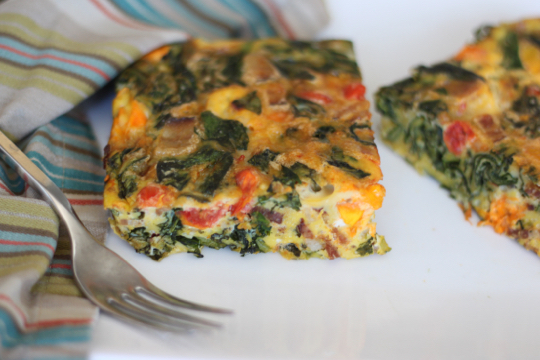 A frittata is a meal suitable for any time of day. Served alone for breakfast or with a side salad for lunch or dinner, it’s a step up from scrambled eggs and less fussy than an omelet.
A frittata is a meal suitable for any time of day. Served alone for breakfast or with a side salad for lunch or dinner, it’s a step up from scrambled eggs and less fussy than an omelet.
Frittatas are generally shoved under the broiler for quick cooking and therein lies the only problem with a frittata. Too often, the eggs are dry and bland. But if you give a frittata a little more time, letting it bake slowly in low heat, the eggs are soft and custardy, but still firm enough to slice. It’s a welcome improvement.
This slow baked BLT frittata – or more accurately BST frittata since healthy spinach takes the place of iceberg lettuce – is a favorite frittata both for flavor and texture. It’s a delicious way to get a healthy dose of protein and the wide variety of vitamins and minerals eggs offer.
Servings: 4
Time in the Kitchen: 45 minutes
Ingredients:
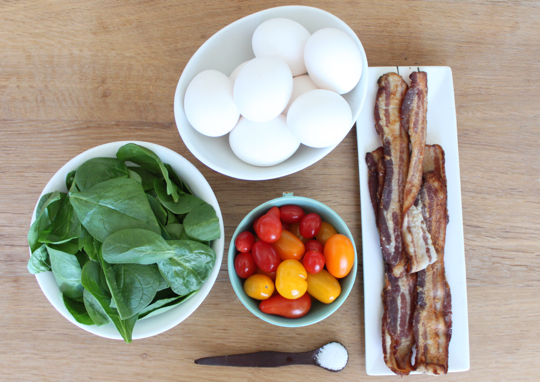
10 eggs
1/2 teaspoon kosher salt (2.5 ml)
4 handfuls raw baby spinach
1 large handful cherry tomatoes, halved
4 to 6 strips cooked bacon, cut into small pieces
Instructions:
Preheat oven to 300 ºF/150 ºC.
Whisk eggs with salt. Set aside.
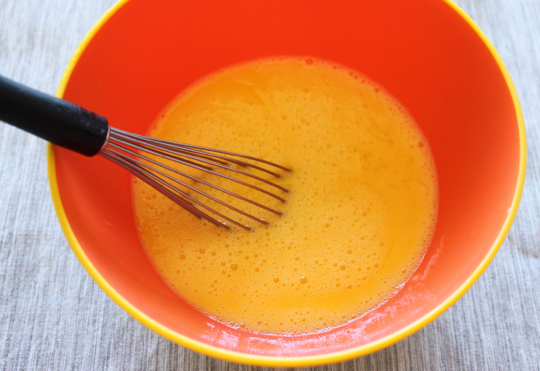
In a 10-inch (25 cm) ovenproof sauté pan placed over medium heat, drizzle some olive oil. Add the spinach and tomatoes and sauté until the spinach wilts and most of the moisture from the tomatoes evaporates. Add the bacon and sauté a few minutes more.


Stir in eggs, keeping the pan on the burner just a few minutes for the eggs to set just a little, then transfer to the oven.
Bake 25 to 35 minutes, or until egg is set in the middle.

Not Sure What to Eat? Get the Primal Blueprint Meal Plan for Shopping Lists and Recipes Delivered Directly to Your Inbox Each Week


February 27, 2015
Realizing the Key to Growth: A Marathoner’s Primal Story
It’s Friday, everyone! And that means another Primal Blueprint Real Life Story from a Mark’s Daily Apple reader. If you have your own success story and would like to share it with me and the Mark’s Daily Apple community please contact me here. I’ll continue to publish these each Friday as long as they keep coming in. Thank you for reading!
 Running can be painful. When you are injured – it is even more painful. But despite all this, I love the sense of freedom and movement that running brings. I have lived for over 12 years as an Englishman with my family in a multinational environment in Singapore, and there is plenty of scope to travel. For me, this meant the quest for the next dose of agony – leading me to the start line of a dozen marathons and over 20 half marathons. With much attention on training plans, and even more time spent running laps on the track, I progressed to a reasonable standard three years ago (1:26 half and 3:21 marathon). Still, there were several things that kept holding me back. I found it hard to control my weight (around 70 kg/154 lbs, at 1.73 m or 5′ 8) no matter how far I ran, and I would always break down in training if I tried to run more than 75 km (45 miles) a week. On top of that, running had become even more painful, and this meant it would soon be time to leave it to others – those both younger and less injured.
Running can be painful. When you are injured – it is even more painful. But despite all this, I love the sense of freedom and movement that running brings. I have lived for over 12 years as an Englishman with my family in a multinational environment in Singapore, and there is plenty of scope to travel. For me, this meant the quest for the next dose of agony – leading me to the start line of a dozen marathons and over 20 half marathons. With much attention on training plans, and even more time spent running laps on the track, I progressed to a reasonable standard three years ago (1:26 half and 3:21 marathon). Still, there were several things that kept holding me back. I found it hard to control my weight (around 70 kg/154 lbs, at 1.73 m or 5′ 8) no matter how far I ran, and I would always break down in training if I tried to run more than 75 km (45 miles) a week. On top of that, running had become even more painful, and this meant it would soon be time to leave it to others – those both younger and less injured.
 During one of my injured spells, I decided to read The Primal Blueprint (following Gary Taubes’ Why We Get Fat and What to Do About It), and it’s fair to say that the effect was inspirational. Law One (Eat Lots of Plants and Animals) was the first to be applied – I moved to a low-carb, high-fat diet, and also began to consider the interrelationship between food and my training. I made sure I had protein after work-outs and avoided sugary drinks in longer runs (and at any time!) and took electrolytes without sugar/sweeteners instead. I also completely rethought my running plan and tried to complete nearly all of my running with a heart rate below 75% of HRmax (Law 3 Move Frequently at a Slow Pace) – and I only ran higher heart rate sessions on very specific occasions in the build up to a race. I also went to the gym two to three times a week (Law 4 Lift Heavy Things). Against my pain loving nature, I recognised there were other big gains to be taken from sleeping more and playing as much as possible with my kids. Maybe my brain had finally recognised that it was time to avoid making stupid mistakes!
During one of my injured spells, I decided to read The Primal Blueprint (following Gary Taubes’ Why We Get Fat and What to Do About It), and it’s fair to say that the effect was inspirational. Law One (Eat Lots of Plants and Animals) was the first to be applied – I moved to a low-carb, high-fat diet, and also began to consider the interrelationship between food and my training. I made sure I had protein after work-outs and avoided sugary drinks in longer runs (and at any time!) and took electrolytes without sugar/sweeteners instead. I also completely rethought my running plan and tried to complete nearly all of my running with a heart rate below 75% of HRmax (Law 3 Move Frequently at a Slow Pace) – and I only ran higher heart rate sessions on very specific occasions in the build up to a race. I also went to the gym two to three times a week (Law 4 Lift Heavy Things). Against my pain loving nature, I recognised there were other big gains to be taken from sleeping more and playing as much as possible with my kids. Maybe my brain had finally recognised that it was time to avoid making stupid mistakes!
The results were huge and positive. Within weeks my weight fell and stabilised around 65 kg (143 lbs), 5 kg (11 lbs) lighter than before). Over time, my strength increased and I rarely got injured. The consistency of my training and running longer distances at lower heart-rate gave me a much greater base. This base and my strength made me faster too – even though I had rarely completed any speed work. Not surprisingly my times improved, but more surprisingly, the pain started to lift. Running didn’t hurt! Beyond my running, eating had become much more pleasurable (no more bloated feeling!) and family time was even more fun.
For a while, I thought this was the end of the story, until I noticed after a couple of years that I wasn’t improving anymore. I went back to Mark’s Daily Apple to see what I might have missed…and I had missed a lot! Somehow I had overlooked the advice on sprinting completely. This has to be one of the most pleasurable experiences that I had missed out on for over 30 years. Also, I had not considered intermittent fasting – not eating once a week for 24 hours has really made me appreciate my food more. Finally, I decided to try life without regular caffeine and alcohol. These are now just in my life around race time – caffeine right before a race – and alcohol several hours after!
 This time the results were significant – but maybe less dramatic. My weight fell further to 62 kg (136 lbs) and my times began to improve rapidly again. My most recent times are 1:22 for a half and 3:05 for a marathon – but it’s nice to think at 45 years old that I have a good chance of running faster times again.
This time the results were significant – but maybe less dramatic. My weight fell further to 62 kg (136 lbs) and my times began to improve rapidly again. My most recent times are 1:22 for a half and 3:05 for a marathon – but it’s nice to think at 45 years old that I have a good chance of running faster times again.
My experiences have shown that there is much to learn from the Primal movement – and almost as much to learn when re-thinking the approach a second time. I am sure there are still plenty more ways to grow when I am ready to accept them. Maybe most importantly, I started to reflect that my running habit and desire to run fast might not be so unhelpful after all – for me these were the key to my attempts to grow.
David



February 26, 2015
Liver, Lobster and Locusts: How Bizarre Foods Win Acceptance
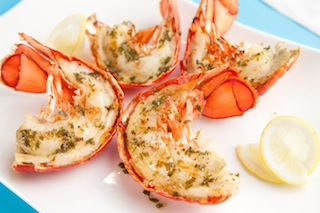 Way back in 2008 I published an article titled Insects: Not Just for Breakfast Anymore, and periodically since then I’ve advocated for bugs as food. It makes sense on so many levels, so I was thrilled to become an investor in a company that was trying to raise awareness and bring (delicious, edible, you-wouldn’t-even-know-they’re) insects to the masses! Exo is pioneering the consumption of crickets as an alternative food source, and was recently named one of The Most Innovative Companies in the World in Food in 2015. The following article is another special guest post from Gabi Lewis, co-founder of
Exo
. We hope you enjoy it. And don’t miss the special discount offer at the bottom of the post. Now, enter Gabi…
Way back in 2008 I published an article titled Insects: Not Just for Breakfast Anymore, and periodically since then I’ve advocated for bugs as food. It makes sense on so many levels, so I was thrilled to become an investor in a company that was trying to raise awareness and bring (delicious, edible, you-wouldn’t-even-know-they’re) insects to the masses! Exo is pioneering the consumption of crickets as an alternative food source, and was recently named one of The Most Innovative Companies in the World in Food in 2015. The following article is another special guest post from Gabi Lewis, co-founder of
Exo
. We hope you enjoy it. And don’t miss the special discount offer at the bottom of the post. Now, enter Gabi…
Nutrition trends swing like pendulums. We’re beginning to understand how to optimally fuel our bodies, but it’s a rocky and roundabout road to get there. We observe this firsthand every day in the mainstream media; consider the messaging around fat: “all fat is good”, then “all fat is bad”, then “some fat is good”, and now “(almost) all fat is good”.
Tastes and food preferences vacillate, as well. Much like nutrition trends, these preferences reverse and re-reverse year after year, ebbing and flowing as we take cues from world-class chefs and influencers. At Exo, we’ve obviously thought about these movements a lot, since we’re essentially trying to bring back a food that humans have enjoyed for eons, but which has recently gone out of style: crickets. In fact, we’ve closely studied some of the foods that have undergone these wild transformations in perception, and successfully made the transition from weird to normal. Here are a few of our favorites:
Lobster
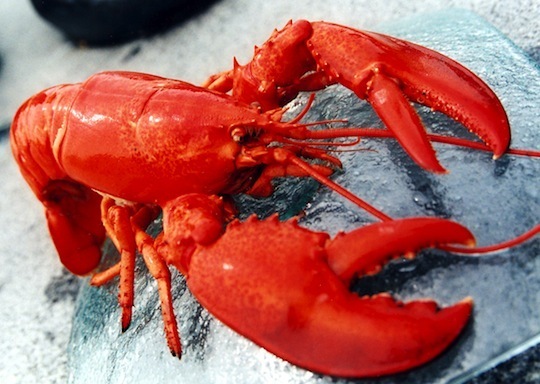 With its name originating from the old English word loppestre, a made-up word for a terrifying spider-locust hybrid, you’d be right in guessing that this symbol of extravagance wasn’t always aspirational. In fact, pre-1900, lobster was barely sold at cost. Native Americans used it as a fertilizer for corn (the original surf ‘n’ turf) and Puritans would apologize to their guests when serving it. Lobster’s abundance rendered it almost worthless—little more than prison slop. There’s even a rumor of a group of indentured servants in Massachusetts who sued their master for serving lobster too often. According to the lore, they won. In the past century, however, lobster has undergone one of history’s most remarkable rebrands. Once considered the “cockroach of the sea”, it’s now the epitome of decadence, topping off tasting menus around the world.
With its name originating from the old English word loppestre, a made-up word for a terrifying spider-locust hybrid, you’d be right in guessing that this symbol of extravagance wasn’t always aspirational. In fact, pre-1900, lobster was barely sold at cost. Native Americans used it as a fertilizer for corn (the original surf ‘n’ turf) and Puritans would apologize to their guests when serving it. Lobster’s abundance rendered it almost worthless—little more than prison slop. There’s even a rumor of a group of indentured servants in Massachusetts who sued their master for serving lobster too often. According to the lore, they won. In the past century, however, lobster has undergone one of history’s most remarkable rebrands. Once considered the “cockroach of the sea”, it’s now the epitome of decadence, topping off tasting menus around the world.
Organ Meats
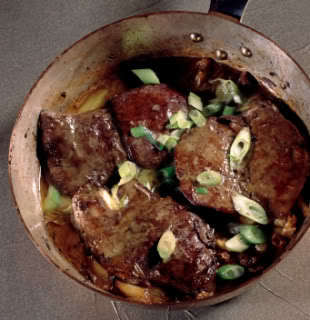 While prized worldwide for their nutritional density and perceived healing properties (eat heart for a healthy cardiovascular system, brain for clear thinking, and so on), we in the West fell out of love with internal organs quite some time ago. We arrogantly redefined “meat” as the muscle tissue of just four animals and in a misguided move of snobbery, decided that everything else—the offal (literally, off-fall, or whatever fell off a butchered animal’s carcass)—was somehow not fit for consumption. It even became common to throw organ meats at convicted criminals to display your disapproval of their actions. A variety of factors reinforced the idea that organ meats were undesirable including the demonization of animal fat, the rise of industrialized agriculture and a desire to distance ourselves from the reality of consuming animals (it’s easier to eat a chicken breast than a chicken foot, and forget what’s actually going on). Thankfully, organ meats are having a resurgence in popularity and we’re learning (or more accurately, re-learning) how incredibly versatile and nutritious they can be. Trends like nose-to-tail dining are helping us to incorporate all parts of the animal into everyday cuisine. Fine-dining chefs are serving delicacies like fois gras and sweetbreads. Health-focused, primal and ancestral communities are understanding and trumpeting the nutritional value of offal. The popularity of organ meats is coming full circle.
While prized worldwide for their nutritional density and perceived healing properties (eat heart for a healthy cardiovascular system, brain for clear thinking, and so on), we in the West fell out of love with internal organs quite some time ago. We arrogantly redefined “meat” as the muscle tissue of just four animals and in a misguided move of snobbery, decided that everything else—the offal (literally, off-fall, or whatever fell off a butchered animal’s carcass)—was somehow not fit for consumption. It even became common to throw organ meats at convicted criminals to display your disapproval of their actions. A variety of factors reinforced the idea that organ meats were undesirable including the demonization of animal fat, the rise of industrialized agriculture and a desire to distance ourselves from the reality of consuming animals (it’s easier to eat a chicken breast than a chicken foot, and forget what’s actually going on). Thankfully, organ meats are having a resurgence in popularity and we’re learning (or more accurately, re-learning) how incredibly versatile and nutritious they can be. Trends like nose-to-tail dining are helping us to incorporate all parts of the animal into everyday cuisine. Fine-dining chefs are serving delicacies like fois gras and sweetbreads. Health-focused, primal and ancestral communities are understanding and trumpeting the nutritional value of offal. The popularity of organ meats is coming full circle.
Kombucha
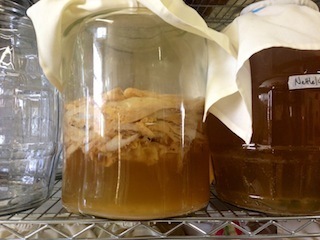 As this literal colony of yeast and bacteria fights it out with coconut and kale for superfood of the year, you’d be forgiven for not remembering that just a few years ago most of us couldn’t stomach it (and many still can’t). Fermented foods are deeply interwoven in the historical fabric of almost every culture on earth—from Sauerkraut in Germany to Kimchi in Korea. And for good reason–recent studies are beginning to link fermented foods to a reduction in the risk of contracting a vast number of negative health conditions. These are true functional foods. Nevertheless, our Western palates took some time to catch up. Although Kombucha sales in the US might reach half a billion dollars this year, it was a virtually non-existent beverage category a mere decade ago.
As this literal colony of yeast and bacteria fights it out with coconut and kale for superfood of the year, you’d be forgiven for not remembering that just a few years ago most of us couldn’t stomach it (and many still can’t). Fermented foods are deeply interwoven in the historical fabric of almost every culture on earth—from Sauerkraut in Germany to Kimchi in Korea. And for good reason–recent studies are beginning to link fermented foods to a reduction in the risk of contracting a vast number of negative health conditions. These are true functional foods. Nevertheless, our Western palates took some time to catch up. Although Kombucha sales in the US might reach half a billion dollars this year, it was a virtually non-existent beverage category a mere decade ago.
Sushi
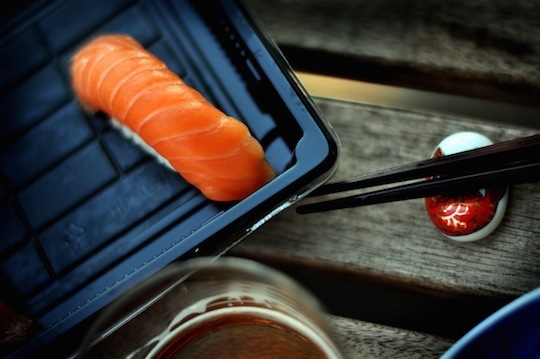
Until recently, the idea of raw fish was disgusting to almost everyone outside of Japan. Few Americans had ever tasted it and the idea of something so raw, slimy, foreign and particularly fishy was not appealing. Everything changed in the late 1960s, however, when a chef in Los Angeles, catering to mostly Japanese expats, couldn’t find the fatty tuna he was looking for and had to innovate. Forced to replicate the texture with a local equivalent of some kind, he chose California avocado (also soft, raw and fatty). He wrapped everything in seaweed and turned it inside out, creating the California Roll and reimagining sushi for Western palates. Fast-forward a few decades and you can find a sushi bar in practically every airport in the country.
Our goal at Exo is to make crickets a mainstream protein source. The only thing standing in our way is cultural perception, and we take tremendous comfort in knowing that there’s a long list of foods that have undergone the exact same transition from obscurity to ubiquity that we’re trying to bring about with insects.
Eating crickets, and insects more generally, simply makes sense. They are nutritional powerhouses, packed with complete protein, healthy fats, iron and calcium; and they’re more efficient to raise than conventional protein sources. The case studies we’ve explored illustrate a profound flexibility in our tastes and preferences, and suggest that framing and perception is everything. If the “cockroach of the sea” can top off a tasting menu with a dousing of garlic butter, and raw fish can penetrate America with some avocado mixed in, imagine what can become of crickets with a little chocolate.
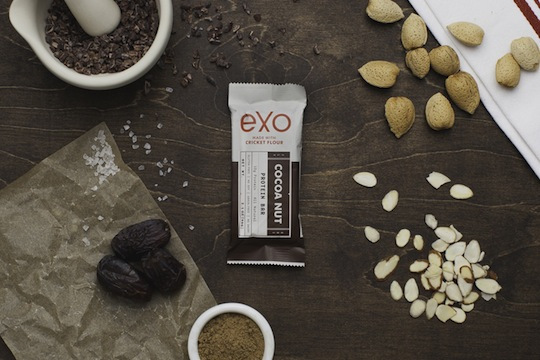
Check out Exo’s range of nutrient-dense snack bars made with cricket protein (no legs, we promise), developed by an award-winning Three-Star-Michelin chef. Formulated to be the perfect introductory vehicle to insects—the California Roll of bug cuisine—these bars combine cricket protein with nut butters, dried fruits, and a touch of honey. Use code MDA15 for 15% off your first order here .
http://www.ncbi.nlm.nih.gov/pubmed/16696665
http://www.cnbc.com/id/101899262
Prefer listening to reading? Get an audio recording of this blog post, and subscribe to the Primal Blueprint Podcast on iTunes for instant access to all past, present and future episodes here.


February 25, 2015
Is Your Workout Worth the Risk?
 Almost everyone I know has a chronic injury of some sort. Maybe it’s a lower back that needs extra warming up before a long day, a knee that gets stiff on cold nights, or a tweaked shoulder that prevents good overhead positioning. They’re usually not crippling, debilitating, or otherwise serious infirmities, but they are injuries that limit quality of life and performance. And all those people, to a person, got their injuries from training. My understanding is that this is true for most people who exercise regularly. Injuries happen to everyone.
Almost everyone I know has a chronic injury of some sort. Maybe it’s a lower back that needs extra warming up before a long day, a knee that gets stiff on cold nights, or a tweaked shoulder that prevents good overhead positioning. They’re usually not crippling, debilitating, or otherwise serious infirmities, but they are injuries that limit quality of life and performance. And all those people, to a person, got their injuries from training. My understanding is that this is true for most people who exercise regularly. Injuries happen to everyone.
It’s possible that I’m experiencing selection bias. Perhaps the injury history of the general exercising public isn’t anything like the history of my circle of ex and current endurance athletes, serious fitness buffs, Ultimate Frisbee enthusiasts, and otherwise active individuals. But I’d wager that most people who step foot into a gym have a nagging injury of some sort. The research suggests injuries happen quite frequently.
A recent survey of CrossFit athletes found that 73.5% had experienced an injury during training, 7% of which required surgery. But before the anti-CrossFit crowd starts gloating, realize that this injury rate is similar to Olympic lifting, powerlifting, and gymnastics and lower than contact sports like rugby. Similar polls in runners find that in a given year, 13% of runners experience knee injuries, 8% get Achilles tendinitis, 7% suffer hamstring pulls, 10% deal with plantar fasciitis, 10% have shin splints, 14% report iliotibial band syndrome, and 6% get stress fractures. There’s no way around it: engaging in non-essential, extracurricular bouts of physical exertion, also known as working out, carries some risk. Not working out carries its own set of (greater) risks, but that’s beside the point. As many a lauded strength coach has said, injuries are a matter of when, not if. And many of these injuries become chronic injuries that stay with you for the rest of your life.
But why single out workout injuries when painters are falling from ladders, people are getting into car accidents, high school basketball players are tearing their ACLs, and desk jockeys are getting carpal tunnel syndrome? Those are unavoidable. Painters have to work on ladders and software developers have to type to eat. High school kids are going to play high school sports. People drive to get to work, pick up their kids, run errands. Accidents will happen. With training injuries, we make our bed and choose to fall out of it. We try for that extra rep when we know we probably shouldn’t. We attempt the CrossFit WOD as Rx’d even though we’re completely gassed. We choose to train for a marathon.
There are also regulations in place to protect people as they go about their days supporting the machine of civilization. We want people driving to work safely, so we have road signs, traffic signals, and lane dividers. We have workplace safety legislation to prevent excessive maiming of employee limbs. High school sports have referees and rulebooks. But once you step under the bar or strap on those running shoes, you’re on your own. Whatever happens is up to you alone.
We’re going to work out. We’re going to stay active and move our bodies and challenge our limits, but we don’t want to get injured. How do we limit these injuries? How do we make good choices?
Barring discussion of specific exercise techniques, like “keep your weight on your heels” or “break at the hips, not the back” or “land on the mid-to-forefoot when running” (because those are beyond the scope of this post and would turn it into a book), what can we do? What should we watch out for? What shouldn’t we ignore? What should we ignore?
Trust your gut.
Most of my injuries were preceded by a gut feeling that I should stop the workout. It’s not always a physical signal, and actual pain isn’t necessarily involved. It’s a subtle sensation that something is amiss and proceeding would be a poor choice.
What’s odd is that I can’t remember an instance where ignoring that feeling turned out well. As far as I can remember, it always ends with a tweak, sprain, pull, twinge, failed rep, or worse. It’s never been worth it, and yet I’ve done it so many times. I bet you have, too.
So stop it. Heed those hints we get from our subconscious.
Train the deadlift, maintain the squat.
That’s what human movement expert Gray Cook recommends. Not everyone needs to place a heavy bar on their back, squat down, and stand up. But everyone should be able to squat unassisted and unweighted, whether it’s to poop while abroad, play blocks with your kid, or perform a nice morning Grok stretch. The comfortable squat is a good barometer for being human.
Determine why you’re doing what you’re doing and whether it’s worth the risk.
That triple set of 20 kipping pullups performed at the end of a long stressful work week would make a sweet Facebook post. But is it really worth it, or would a few sets of strict chinups achieve similar things while drastically reducing the risk you incur with the kips?
Do you really need to deadlift 500 pounds? Some people, yes. Most, no. Most would be more than strong enough with a double bodyweight deadlift.
Are you chasing big numbers or fast times or that marathon for a good reason? Get down deep into the nitty gritty and expose your true motivation. You may find that it’s still worth pursuing, but at least you’ll know for sure.
Move around a little every day.
Don’t train every day (or even most). Move. This keeps you limber, loose, and out of stasis. Doing a light movement session every single morning (perhaps as a part of your morning routine) gets this out of the way early.
Don’t dread your training.
Mortal fear on the eve of a Tuesday workout is a bad sign, folks. You can certainly approach your training with a bit of apprehension, but all-out existential dread? You might want to reevaluate why you’re doing what you’re doing.
Leave some in the tank.
Not every training session has to be a breakthrough workout. Not every training session can be a breakthrough workout. You can’t go to failure every time.
Just back off. Don’t get the extra rep. Leave one, two, maybe even three in the tank.
Develop a bone broth habit.
Get into the rhythm of making bone broth on a regular basis. Or, make a bunch at once and freeze it for later. But even if bone broth isn’t a strong source of bone-relevant minerals, the collagen alone is important for keeping joints pliable, lubed up, and resilient, and the glycine in the gelatin can make your sleep more restorative and counter any potential inflammatory effects of specific muscle meat amino acids. Drink about a cup a day.
If you can’t do the movement unweighted, don’t do it with weight.
This is a pretty simple concept that many people ignore because adding weight can help you force your joints past a difficult spot. That’s just gravity exerting greater pull on you; it’s not evidence of improved mobility, and it’s probably not all that safe.
Learn the difference between pain and soreness.
Training can hurt. It can “burn” during the session. It can lead to extreme soreness for days after as the microtears in your muscle fibers repair themselves. But it shouldn’t cause pain. Pain indicates malfunction. It means danger. It suggests your tissues are rupturing, are about to rupture, or have already ruptured. Get to know pain so you know when to hold back and when to push through.
Don’t train through pain.
Once you’ve encountered and known pain, don’t ignore it. If you get a sharp stabbing pain in the back of your left knee during passive knee flexion, skip squats today. It simply isn’t worth it. There’s always tomorrow (or next month, if the pain’s bad enough).
Incorporate single arm and leg training.
Squats and deadlifts and overhead presses are great, but have you tried lunges, single leg deadlifts, and dumbbell presses? They work many of the same muscles as the bilateral movements while being a bit safer and forcing you to develop balance, mobility, and stronger stabilizer muscles.
Do a variety of exercises.
Repetitive motion breeds injury, whether you’re working at a mouse and keyboard for 8 hours a day, throwing fastballs, jogging the same route at the same pace, or doing the same four exercises for years on end. If all you’ve ever done is pullups, the occasional chinup won’t kill you. And it may even help.
If you’re at all hesitant about your technique, get evaluated by a professional.
Even though I said I wouldn’t discuss technique or form, this is more of a general recommendation. Chances are you’ve spent a lot of your life sitting in chairs, standing in heeled shoes, and doing other activities that impair your tissue’s ability to move freely and fluidly. You may need an expert’s eye before you can expose those tissues to training stressors in a safe way.
Want to do a basic 5×5 barbell program but your squat feels off? Don’t just power through it. Get a pro to look at your form and give you some tips.
Want to train for a marathon while wearing Vibrams? Don’t just launch into a training program. Check out a POSE running workshop, or look for a barefoot/minimalist running group or coach in your area.
Today, I want you to take a good long look at the way you’re training. Be honest with yourself: is it worth the risk? Do the rewards justify the threat of injury?
Prefer listening to reading? Get an audio recording of this blog post, and subscribe to the Primal Blueprint Podcast on iTunes for instant access to all past, present and future episodes here.



February 24, 2015
Can Getting Your DNA Tested Help You Optimize Your Diet and Training?
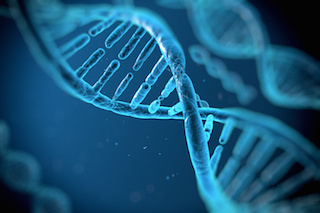 Last month, I received an unexpected email request from a man named Craig Pickering: “Send me your saliva.”
Last month, I received an unexpected email request from a man named Craig Pickering: “Send me your saliva.”
Craig works for DNAFit, a genetic testing company using customers’ DNA results to optimize their diet and training. He’s a former Olympic 100 m and bobsleigh (bobsled to us Yanks) athlete, and a longtime reader of the blog, who’s helping elite athletes, weekend warriors, and regular folks alike discover their genes’ preferred diet and training style.
Intrigued, I received the testing kit and sent the sample back. Sure, why not? I’m game.
The results came back quickly, which I’ll summarize:
“You tolerate caffeine well.”
“You tolerate lactose well.”
“You are very unlikely to develop celiac disease.”
“You can recover from training quickly, from a genetic standpoint.”
“You have a higher than average soft tissue injury risk. This doesn’t mean you definitely will get injured, just that you should expect recurrent tendon, ligament, and connective tissue issues.”
“You have a 57-43 endurance:power split. This means that you generally respond better to endurance exercise, but you also respond pretty well to power-based training.”
“You have a high sensitivity to carbs, which means that you tolerate them poorly in regards to body weight control and general health.”
“Your fat tolerance is higher than your carb tolerance.”
“You have an elevated genetic need for omega-3 fats and vitamin D. You have versions of certain inflammation genes that predispose you to higher baseline levels of inflammation, which omega-3s specifically regulate.”
None of these results were surprising. Instead, they confirmed an assortment of intuitive conclusions I had come to over the course of my life.
I love my morning cup of coffee and never experience any sleep issues as a result, even on the rare occasion I have a cup in the afternoon.
I’m Scandinavian, an ethnic group with almost ubiquitous lactose tolerance, so my ability to handle dairy was completely expected. I don’t drink milk at all, but I do loves cheese and butter.
I can get away with some quality bread and butter when out to eat at a good restaurant, or a bite of grain-based dessert. Even though I don’t make it a habit, a bite or two doesn’t wreck me like it would a person with celiac or clinical gluten sensitivity. On the other hand, I’ve learned through trial and error that more than a few bites of bread will cause problems the next day.
Workout recovery was usually a breeze for me. Well, let me rephrase that: I always felt “up” for another training session, even if I probably should have rested.
Tendon issues have always been my nemesis. That finding was interesting to see. I wonder if part of it’s due to my increased ability to recover from and re-engage in exercise letting me get back to training before my connective tissue is ready to go again. The muscles and cardio system recover a lot quicker than tendons, ligaments, and cartilage. As I’m getting older, those issues become even more apparent. In fact, I am currently trying to overcome an Achilles’ issue that has plagued me for months.
My 57% endurance to 43% power makeup was extremely intriguing, because while I was a tried and true endurance guy during my peak competitive years, I’ve become more of a power athlete in recent years, strength training, playing Ultimate, and sprinting more than anything. At first glance, that’s a high power value for an elite marathoner and Ironman triathlete–endeavors that are almost entirely aerobic and require little explosive power. I almost wonder if my genetics were better suited to a focus on sprint triathlons, or the 3,000 meter steeplechase, or even the mile.
Hmm, too late now.
Notice that I’m highly sensitive to carbs. If it wasn’t for my extreme athletic background, I’d likely be a “skinny-fat” guy. But just because my lifestyle allows me to eat carbs without gaining fat, I still choose not to eat many. I’m more concerned with the functional considerations about my carb sensitivity. I feel lousy on a high-carb diet and do much better with higher fat.
Being Scandinavian also explains my genetic need for omega-3s and vitamin D. Oily, cold water fish was a huge component of northern latitude coastal diets and often the only reliable source of vitamin D in the area, since anything north of the 60th parallel (Alaska, Canadian Northern Territories, most of Norway, Sweden and Finland, top half of Russia) receives very little “actionable” UVB from the sun.
On the vitamin D, my ancestry delivers a “raised” need score, but what the computer didn’t realize is that I live at much lower latitude than my ancestors. Whereas they satisfied their needs with oily, vitamin D-rich fish (and the occasional raiding party to southerly locales), I have met my raised need very easily since I bailed on my childhood home of Maine for California decades ago. As long as I get my daily dose of sun, I’m good to go.
What’s my overall take on the results and DNAFit in general?
Anyone who’s read my blog (particularly the piece on blood pressure tests) knows how little stock I take in lab tests as a barometer of overall health. Whether it’s BP, cholesterol, testosterone, thyroid or any other of the usual battery of biomarkers, what we get is just a snapshot of one point in time in an often very dynamic range for each vital area. It’s like looking at a poster of Cool Hand Luke and trying to predict what will happen in the movie.
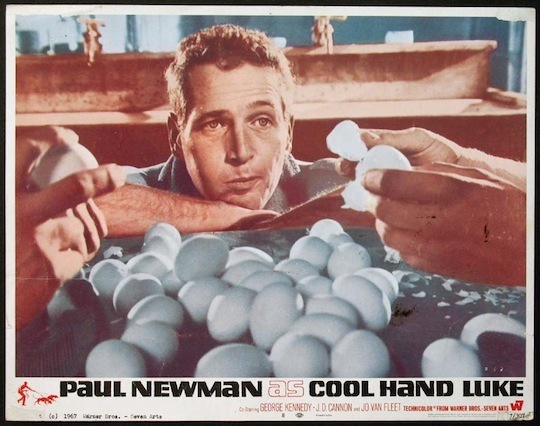
The difference here is that in DNA testing we have a static, immutable recipe that doesn’t change over time, but is profoundly affected by the epigenetic inputs we decide to present. And that’s where the power of getting evaluated by the guys at DNAFit emerges: as a roadmap for potential epigenetic triggers we ultimately control.
I’m “good” at endurance training. I’m “built for” it. But my genetic proclivity didn’t give me a free pass to all the training I wanted without side effects. It didn’t lead to greater health or the promised land of physical perfection and optimal longevity. In fact, it actually set me up for health issues. Endurance training came so naturally to me that I lost myself in it and opened myself up to decades of chronic overtraining, connective tissue issues, poor gut health, and reliance on an unhealthy amount of carbohydrate.
All that said, this was an illuminating, informative experience for me, and I’d urge anyone who’s at all interested in their genetic predisposition for certain diets and training methodologies to give DNAFit a look. These guys are professionals who know what they’re doing and, as long as you understand that the results don’t indicate your destiny and that you can alter the expression of the genes through diet, exercise, and lifestyle, you can benefit from their input.
If you’re interested in learning more, check out the latest Primal Blueprint Podcast in which host Brad Kearns sits down to talk with one of the fastest guys in the world, Olympic athlete Andrew Steele of DNAFit.
BONUS: Some of you have asked for a discount code. DNAFit has offered one to Mark’s Daily Apple readers. Use the code PRIMALBLUEPRINT when ordering the Fitness Diet Pro Kit and receive 30% off, bringing the price from $399 to $279. Expires at the end of March, 2015.



February 23, 2015
Dear Mark: Kid Skipping Breakfast, Rinsing Meat, Glutamate, and the Snooze Button
 For today’s edition of Dear Mark, I’m answering four reader questions. First we have a question about an inadvertently fasting 11 year-old girl whose mom is concerned. Should she force the issue and convince her to eat breakfast, or let her do her thing? Second, what’s the real story behind rinsing raw meat? Does it actually remove bacteria and reduce the chances of food-borne illness? Third, is glutamic acid, or glutamate, really a health concern for everyone? MSG is one thing, but what about glutamate found in real, otherwise healthy foods like meat, sardines, and aged cheeses? And finally, I discuss whether or not hitting the snooze button is good for you.
For today’s edition of Dear Mark, I’m answering four reader questions. First we have a question about an inadvertently fasting 11 year-old girl whose mom is concerned. Should she force the issue and convince her to eat breakfast, or let her do her thing? Second, what’s the real story behind rinsing raw meat? Does it actually remove bacteria and reduce the chances of food-borne illness? Third, is glutamic acid, or glutamate, really a health concern for everyone? MSG is one thing, but what about glutamate found in real, otherwise healthy foods like meat, sardines, and aged cheeses? And finally, I discuss whether or not hitting the snooze button is good for you.
Let’s go:
Hi Mark,
I have a question about IF & children. My daughter has always had a natural tendency to extend her fast from dinner through the better part of the next morning (sometimes until lunch time if I don’t say anything).
In the past, I’ve practically force fed her breakfast because CW says “it’s the most important meal of the day.”
My daughter is 11 now and I’m still not sure I’m convinced it’s ok for a child to skip breakfast. What do you think? Should I just let her listen to her body’s hunger cues & not push the issue? Or do you think a growing kid needs to chow down, or at least eat something, before tackling the day? (I wanted to mention that we homeschool, so it’s not like I’d be sending her off on an empty stomach. She has the opportunity to break her fast whenever she’s ready. I just thought I’d throw that out there in case your advice might be different for a child who wouldn’t have the same opportunity to eat whenever they want.)
I often fast through the breakfast hours, so I completely understand the tendency to be disinterested in breakfast. I don’t want to be a hypocrite, just raise a healthy kid.
Thanks for answering (fingers crossed),
Beth
That’s a tough one. I’m inclined not to force a kid to eat when they don’t want to, for two reasons:
1. Their body knows best. If they don’t want to eat, they probably don’t need the food. Kids are usually less “corrupted” by years of living in the modern world, and their satiety mechanisms are more likely to remain intact. However, this may not always be the case.
2. Forcing a kid to eat can create a difficult relationship with food that lasts well into adulthood. This would be bad. Food fights, unless you’re talking about the dinner scene from Hook, usually end badly.
But there’s some evidence, albeit just epidemiological, that children who regularly skip breakfast are at a higher risk for type 2 diabetes. I’d say as long as your kid doesn’t have the other characteristics associated with type 2 diabetes, like being overweight, having no interest in physical activity, and/or getting lots of screen time on a daily basis, and skipping breakfast isn’t leading her to gorge on junk food when she actually does eat, you don’t have to worry much.
That said, kids often do well with breakfast. Mine certainly relished theirs and really seemed to thrive with breakfast. She may be doing fine, but what if she’s even better with a solid meal for breakfast? As you say, they are growing and they do need the nutrients and if they’re unable to squeeze them in on a truncated eating schedule, breakfast could really help.
You might try eating breakfast in front of your daughter on a regular basis. Just eat something delicious and make it clear that you’re enjoying your food. Bacon, omelets, fruit, Primal pancakes (assuming she’s Primal), just eat something good. You probably don’t even have to explicitly offer the kid any; she’ll want to do what mom’s doing. That’s how (many, perhaps most) kids work.
Hi,
Mark, would like your opinion on the topic of washing raw meat before cooking? Proponents claim it removes bacteria while opponents claim it spreads the bacteria on the surfaces where the water splashes. Is it really necessary? Thanks.
Roy
It’s totally useless. The USDA, who are usually real sticklers about food safety and tend to err on the side of so much caution that it ruins good meat, recommends against rinsing meat. It’s worse than useless, even; rinsing meat absolutely can and does send bacteria spraying all over your kitchen. Besides, for it to really remove all the bacteria, you’d have to use soap and get it all sudsy, which is really disgusting to even imagine.
The cooking is enough. You’re worried about surface bacteria, right? Any surface bacteria is killed during the application of heat. You sear a steak on both sides and the bacteria (if there any actual pathogens to worry about in the first place) is nullified.
And from a culinary standpoint, it’s counterproductive. The last thing you want to throw on the grill is a wet, soggy, sodden piece of chicken or beef. Get that sucker as dry as possible and skip the rinsing.
Hi Mark,
First I’d like to say how much I appreciate the quality and professionalism of your blog. Among its many functions, MDA serves as an exceptional aggregate of valuable information, and for this reason it’s the first place I go when looking for nutritional guidance.
My question:
How should we treat glutamic acid?
There’s quite a bit of anecdotal information on the internet supporting a move away from it, but is it truly a concern? And what does this mean for overall protein consumption? It’s present in relatively high quantities in protein powders, as you know, but also in my favorite food: sardines.
Thank you so much,
Kellan
Thanks, Kellan. Glad to hear the blog is working for you! I’ll make sure to keep it up.
Glutamate (or glutamic acid, as you say) is a naturally occurring amino acid found in lots of our favorite foods. Meat, fish (especially fish sauce or as you said, sardines), shellfish, mushrooms (which is why they make fair meat substitutes), and dairy (especially aged cheeses like pecorino romano or parmesan or gouda) all contain appreciable amounts of glutamate, which provides the umami, or savory/meaty flavor we find so appealing.
Our guts really like it, too. Literally: glutamate is an important energy source of the cells lining the gut. Whether it comes from our food that was spiked with MSG in the kitchen, we dipped our chicken skewers into fish sauce, or the partial digestion of the protein bonds in the meat we just ate yielded up some glutamate, our guts are set up to detect and utilize free glutamate. Most human studies involving large oral doses of MSG are unable to increase plasma glutamate levels because the guts cells are consuming the bulk of it before it can go anywhere else. If we weren’t ever meant to consume glutamate or foods that naturally contain glutamate, we wouldn’t have such a natural appetite for it.
Plus, there are definite benefits to glutamate.
It can increase appetite and improve digestion, especially in chronic gastritis patients with low appetite and poor digestion caused by impaired gastric secretion. And that’s using MSG, the “evil” stuff.
But perhaps the coolest way to use glutamate is as a training tool to condition people to like novel flavors. Splashing some fish sauce onto bitter greens can help people learn to enjoy the greens, even after the source of glutamate has been removed. Any parents with picky kids want to give this a shot and report back?
I think there are glutamate-sensitive populations who may need to limit the amino acid, though.
Autism: Researchers have identified an imbalance in the brain levels of glutamate and GABA — too much of the former and not enough of the latter — in many autistic subjects, and some parents of children with autism have noticed beneficial changes after removing concentrated sources of glutamate, like MSG or fish sauce.
Migraines: Glutamate is a common migraine trigger. If you suffer from migraines, give a low-glutamate diet a shot for a month or so. Can’t hurt, right?
Obesity: The appetite stimulating effects which help gastritis patients can go too far, of course, at least when you’re talking about isolated MSG:
In one study, MSG in a meal increased the onset of subsequent hunger. People who had MSG in their soups got hungry faster.
Maternal MSG consumption may impair appetite regulation in offspring.
In healthy adults, MSG intake has been positively linked to the development of obesity.
Glutamate is an indicator of protein, a valuable nutrient. When glutamate is divorced from the nutrient it’s supposed to indicate, the appetite may be excessively stimulated — as the above studies suggest. As long as you’re actually getting protein when your body senses glutamate, I see no reason to avoid it.
I wouldn’t worry, honestly. If your favorite food is high in glutamate, and you presumably consume your favorite food regularly without ill effect, keep on doing it. I’m not a big fan of worrying about “silent damage” without considerable supporting evidence. It does more harm than good.
Hi Mark,
Really hoping you can settle a debate between me and my girlfriend. We are both aware of the importance of sleep, and most days we are lucky enough to wake up without an alarm clock. But she does one thing that drives me up the wall: on those days where she needs to get out of bed earlier than normal, she will intentionally set her alarm way before that time, then hit the snooze button multiple times (sometimes as many as 10!) before finally getting out of bed.
I’ve tried to convince her to just set the alarm for the latest possible required wake up and on the idea that deep sleep is more restorative than repeatedly falling into light sleep and being startled awake. But am I actually right? Is there any chance that her “interval sleeping” is as restorative as a longer sleep?
Thanks for all that you do.
Terrence
The problem with the snooze button is that every time you hit it and return to slumber, you’re restarting the sleep cycle. You’re not picking up where you left off (which is why falling back asleep to continue that awesome dream never works out), you’re going to bed all over again. And that means you never hit the restorative part of sleep. Instead, you’re being woken up by the alarm over and over again in the part of the sleep cycle that’s hardest to wake up from.
Of course, that’s also why hitting the snooze button feels so dang good. You get to fall back asleep when it’s the hardest to stay awake — when you’ve just woken up. One early wake-up when you’re not prepared to get up is bad enough. Ten early wake-ups each morning is pure misery and sends the wrong message to your body. Each time you wake up from the snooze, your body has to “wake up” all over again. This type of sleep fragmentation reduces wakefulness the rest of the day.
It’s understandable why we like the snooze button so much. In those early waking moments between sleep and full alertness, our executive functioning — our decision making skills — is impaired. We’re more reliant on our lizard brains, so even if we know that the snooze isn’t good for us in the long run, we punch the button because it feels good in the short term.
Congratulations, Terrence. You’ve won the argument. But unless you plan on exclusively using the bedroom for sleep, I recommend against celebrating too publicly.
That’s it for today. Thanks for reading, everyone! Take care.


February 22, 2015
Weekend Link Love – Edition 336
 Primal Kitchen™ Mayo officially launched this week! You can get single jars at Thrive Market. Register for an account at Thrive Market using this link and you’ll be entered to win a $500 gift certificate and 1 of 20 annual memberships ($60 value). Offer expires Wednesday, Feb. 25. Or you can order 3-packs from PrimalBlueprint.com.
Primal Kitchen™ Mayo officially launched this week! You can get single jars at Thrive Market. Register for an account at Thrive Market using this link and you’ll be entered to win a $500 gift certificate and 1 of 20 annual memberships ($60 value). Offer expires Wednesday, Feb. 25. Or you can order 3-packs from PrimalBlueprint.com.
Join me in Manly Beach, Australia next month, and in Southern California next September.
Research of the Week
Topical animal collagen — in this instance, from tilapia skin — quickens wound healing.
Primary prevention risk calculators are overestimating the chance of heart attacks by up to 154% in men and 67% in women. Yup, the very same risk assessments telling us we’ll all die if we don’t start statins immediately.
A key ketone metabolite blocks the inflammatory cascade triggered by a specific set of genes.
“For every hour later of [artificial light exposure] in the day, there was a 1.28 unit increase in BMI…”
New Primal Blueprint Podcasts
Episode 55: Al Kavadlo: Host Brock Armstrong talks to Al Kavadlo, calisthenics wizard, bodyweight training expert, prolific author, and all-around awesome guy about Al’s training philosophy, his books, the role of inspiration in effecting lasting change, and much more.
Each week, select Mark’s Daily Apple blog posts are prepared as Primal Blueprint Podcasts. Need to catch up on reading, but don’t have the time? Prefer to listen to articles while on the go? Check out the new blog post podcasts below, and subscribe to the Primal Blueprint Podcast here so you never miss an episode.
Primal Kitchen Mayo is Now Available
Why Is Regaining Weight So Common?
Top 8 Most Common Reactions to Your Grain-Free Diet (and How to Respond)
The Definitive Guide to Dairy
Interesting Blog Posts
Tight hips and hamstrings are at the root of many movement dysfunctions, and people who sit a lot are liable to end up with both. These videos from Angelo dela Cruz will show you how to give your hips and hammies some much-needed love.
Why the sun (and the vitamin D it provides) is so important for your periodontal health.
Media, Schmedia
Low-fat advice was bad advice, admits yet another media outlet.
Citing the latest evidence, Australian doctors are recommending that patients stop antibiotics once they feel better. The full course isn’t actually necessary after all (and may be harmful).
Everything Else
A first-grade teacher in Saskatchewan has outfitted his class with standup desks.
Antibiotic-resistant pathogens are increasingly moving, as pathogens are wont to do, from pigs to people.
Have we gotten the science behind anti-depressants totally backwards?
Scientists have just mapped the epigenome.
Hey, east coasters: keep it down, will ya?
Recipe Corner
Chicken liver paté is milder than ruminant liver patés, and a better entry point for offal novices.
For a nice variation on sweet and white potatoes, try making hash with taro root.
Time Capsule
One year ago (Feb 23 – Mar 1)
The Best Exercise There Is, Hands Down – What’s the single best exercise you can ever do?
Why You Should Book a Massage Today – Massages don’t just feel good. They’re good for you.
Comment of the Week
There is apparently some small risk of getting variant Creutzfeldt-Jakob disease (essentially mad cow disease in humans) from elk. The disease agent is a prion, which is resistant to high temperatures, and so the brains, spinal cord, and some other parts shouldn’t even be handled, let alone eaten, in areas where the wild elk population is known to have the disease.
http://www.cdc.gov/ncidod/dvrd/cwd/
“Hunters who harvest deer or elk from known CWD-positive areas may wish to consider having the animal tested for CWD before consuming the meat (information about testing is available from most state wildlife agencies). Persons involved in field-dressing carcasses should wear gloves, bone-out the meat from the animal, and minimize handling of the brain and spinal cord tissues.”
Risk is small, but still … google “CWD hunters” for more than you ever wanted to know.
– Thanks for the warning, reader Anne and others.



February 21, 2015
Fish Tacos with Primal Mayo
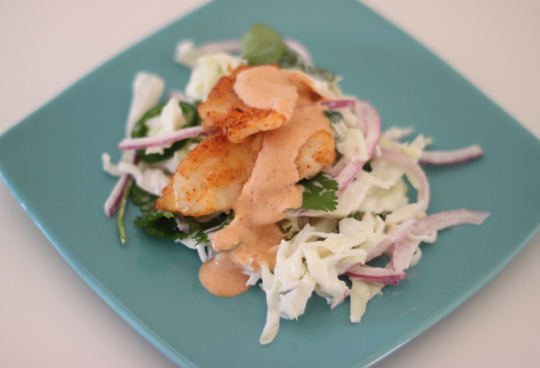 Primal Mayo has arrived, a delicious and healthful Primal and Paleo approved mayonnaise that’s made from real food ingredients and tastes like real mayonnaise. Finally, mayonnaise can once again be a convenient condiment that’s always in your fridge, rather than something you have to whisk together by hand every time!
Primal Mayo has arrived, a delicious and healthful Primal and Paleo approved mayonnaise that’s made from real food ingredients and tastes like real mayonnaise. Finally, mayonnaise can once again be a convenient condiment that’s always in your fridge, rather than something you have to whisk together by hand every time!
Even if you’re not someone who regularly craves mayonnaise, a jar of Primal Mayo in your fridge makes it really easy to whip up all sorts of delicious salad dressings, sauces and dips. In this recipe, Primal Mayo is quickly transformed into zesty lime dressing and smoky chipotle sauce. Both the slaw and the sauce bring a ton of flavor to simple fish tacos.
Piled high on a plate (or on a Primal tortilla), this combination of creamy slaw, crispy fish and spicy chipotle sauce are everything a fish taco should be. You’ll probably have a little chipotle-flavored mayo leftover, which is a very good thing. Pour it on burgers, roasted vegetables, chicken, shrimp, pulled pork… you’ll be hard pressed to find something this addictively spicy sauce doesn’t taste good on.
Servings: 4
Time in the Kitchen: 45 minutes
Ingredients:
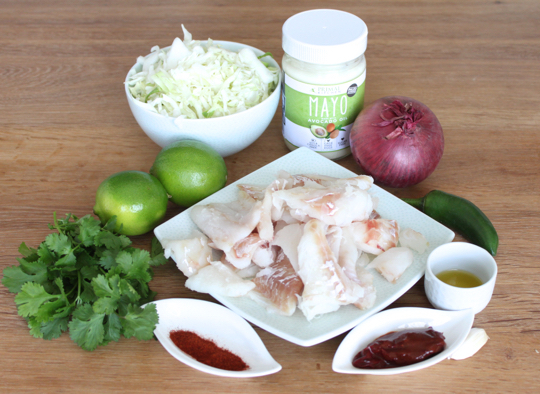
Slaw:
1/3 cup Primal Mayo (70 g)
1 tablespoon plus 2 teaspoons lime juice (25 ml)
½ head of cabbage, shredded, or a 10 oz bag of shredded cabbage (285 g)
1 to 2 jalapeno peppers, thinly sliced
½ a red onion, very thinly sliced
A big handful of fresh cilantro leaves
Chipotle Sauce:
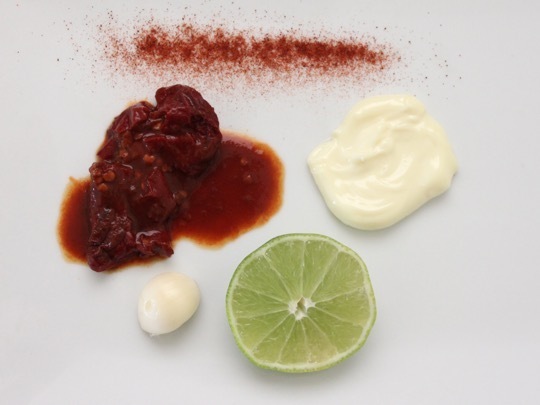
1/2 cup Primal Mayo (100 g)
1 garlic clove, finely chopped
1 chipotle pepper in adobo sauce, finely chopped (very spicy) or just 2 tablespoons (30 ml) of the adobo sauce (less spicy)
¼ teaspoon smoked paprika (a pinch)
2 teaspoons lime juice (10 ml)
Fish:
1 pound flaky white fish, cut into 16 equal strips or pieces (450 g)
3 tablespoons extra virgin olive oil (45 ml)
¾ teaspoon smoked paprika (4 ml)
½ teaspoon kosher salt (2.5 ml)
Instructions:
Turn oven broiler to high.
For the slaw, in a small bowl whisk together the Primal Mayo and lime juice. In a big bowl, toss together the cabbage, jalapenos, onion and cilantro. Drizzle the lime mayo on the slaw, tossing well. Set aside.
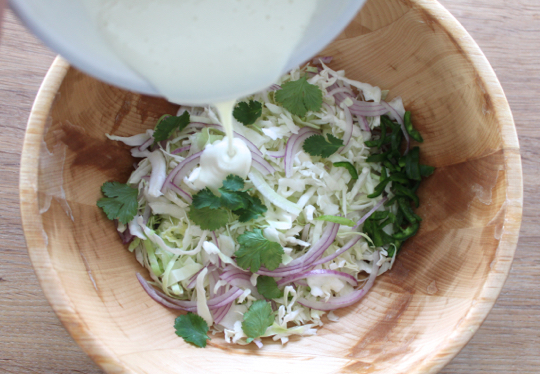
For the chipotle sauce, whisk together the Primal Mayo, garlic clove, finely chopped chile in adobo sauce (or just 2 tablespoons of the adobo sauce), paprika and lime juice. Set aside.
In a rimmed baking pan, toss the fish with the oil, paprika and salt until evenly coated. Broil the fish for 6 to 10 minutes, turning the pieces once while they cook. The cooking time depends on how thick the pieces are and how crispy you like the fish.

On each plate, top the slaw with fish and chipotle sauce. Serve with or without homemade Primal tortillas.
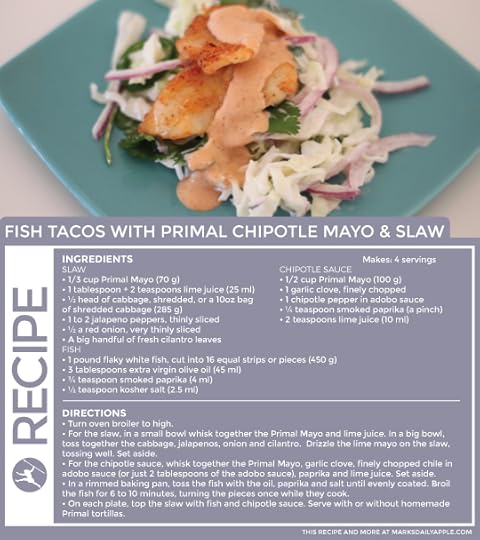
Not Sure What to Eat? Get the Primal Blueprint Meal Plan for Shopping Lists and Recipes Delivered Directly to Your Inbox Each Week


February 20, 2015
Going Primal Will Change Your Life for the Better!
It’s Friday, everyone! And that means another Primal Blueprint Real Life Story from a Mark’s Daily Apple reader. If you have your own success story and would like to share it with me and the Mark’s Daily Apple community please contact me here. I’ll continue to publish these each Friday as long as they keep coming in. Thank you for reading!
 I’d like to share my success story as one of your biggest overseas fans! I don’t have many pics showing the differences in appearance before and after my shift to a Paleo/Primal lifestyle that I really want to share with the world. As you may imagine, I’m not particularly proud of my old appearance back then, if you know what I mean…
I’d like to share my success story as one of your biggest overseas fans! I don’t have many pics showing the differences in appearance before and after my shift to a Paleo/Primal lifestyle that I really want to share with the world. As you may imagine, I’m not particularly proud of my old appearance back then, if you know what I mean…
Since I wasn’t very happy with my heath (high body fat percentage, many allergies, food intolerances, frequent headaches, blood pressure, etc.), I first tried the Zone Diet by Barry Sears. Before adopting a Primal lifestyle I was quite overweight and I was plagued with many health issues: allergies to pollens (a lot of them) and dust, frequent joint and back pain, frequent (almost daily) migraine attacks, difficult digestion, gastric reflux, sleep apnea…just to name a few.
Just by cutting all the “white carbs” like bread, pasta, pizza, biscuits, potatoes and rice, I was able to lose about 10kg of body fat in about a year. But then I hit a plateau and the weight loss stopped. I was looking for something to push through this plateau and then I found the “Paleozone” as an apparently more effective version of the Zone Diet. I went pretty much cold turkey and also cut dairy products, legumes and any kind of packaged food or food containing artificial ingredients, preservatives and/or vegetable oils and trans-fats. I had never drank alcohol in my life (I mean 100% zero alcohol) so it was easier for me on that front, but I was a pretty heavy consumer of sweets like chocolate bars, sodas, biscuits and alike.
At the beginning, what helped me stay away from those kind of addictive sweets was organic fruit, and tons of it. Then, after about six months (once I got rid of my “addiction” to sugary artificial products), I managed to cut back on fruits and lower my carb intake even more by eating tons of vegetables with lots of Italian extra virgin olive oil and organic coconut oil. In that phase I also found it very helpful to take a spoonful of L-Glutamine powder in water to beat the occasional night sweet cravings.
With this new approach I lost another 10kg of body fat while gaining some lean muscle mass in about a year and a half. Then, intrigued by the “Paleo” concept, I dug into it further by listening to some paleo podcasts like “Latest in Paleo” by Angelo Coppola. And, thanks to him, I was introduced to the main Paleo stars like Lorain Cordain, Robb Wolf and, of course, the great Mark Sisson.
After reading The Primal Blueprint by Mark and Paleo Solution by Robb Wolf (which I bought both in the English iPad versions and then as regular books when they were available in Italian), I added the right kind of exercise: daily long walks and stretching, weekly sprints, weekly resistance and body-weight training. From there, I was able to shed even more fat and gain some more muscle mass.
Also, after being totally keto-adapted from years of pretty low-carb dieting, I started experimenting with intermittent fasting (IF). Now I usually eat only once or twice a day to satiety. When I’m deeper in ketosis because of my IF, I feel my brain is even more focused and sharp, having access to my residual body fat as a stable source of energy all day long. This is a sharp contrast to the energy roller coaster I used to experience before my transition to this healthier lifestyle.
Now, compared to 2011, I’ve lost 22 kg of fat and gained about 10 kg of lean muscle, which show pretty well on my 170 cm of height! All the health issues that plagued me almost all my life disappeared completely (allergies being my biggest surprise), and my blood numbers have all been back in an optimal range since adopting this lifestyle. I also got rid of all my antihistamines, antacids, and non-steroidal anti-inflammatory drugs forever!

Now I don’t take any other supplements other than Omega-3s (I take 6 grams a day) and some Vitamin D during the fall and winter. My only treats now are a couple of dark chocolate squares once in a while. That’s it and I truly don’t miss anything.
By becoming a “Fat Burning Beast” I now enjoy constant energy levels all day long. And, if convenient, I can go even 24 hours or more just drinking pure water and I’m totally fine—with no sugar crashes or food cravings at all! As for my physical activity, I just walk at least an hour every day in the woods, I do sprints twice a week and a 30 minute total bodyweight workout on alternate days in the park.
I recommend this Paleo/Primal lifestyle to everybody: men and women, young and old, healthy and not so healthy. It will change your life for the better, believe me! All you need is some will power to get rid of (and then stay permanently away from) all the processed food and drinks. Plus, stick to real whole food and plenty of natural water. Then, couple that with the right HIIT exercise and get enough sleep. That’s all!
Federico



Mark Sisson's Blog
- Mark Sisson's profile
- 199 followers




